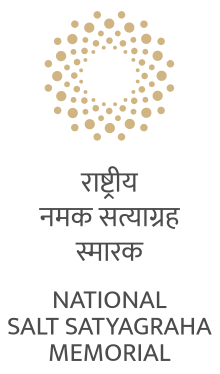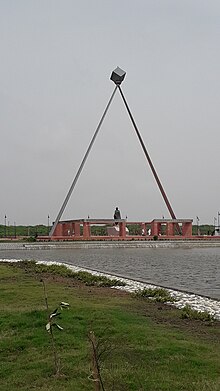
The Salt March, also known as the Salt Satyagraha, Dandi March, and the Dandi Satyagraha, was an act of nonviolent civil disobedience in colonial India, led by Mahatma Gandhi. The twenty-four day march lasted from 12th March to 5th April 1930 as a direct action campaign of tax resistance and nonviolent protest against the British salt monopoly. Another reason for this march was that the Civil Disobedience Movement needed a strong inauguration that would inspire more people to follow Gandhi's example. Gandhi started this march with 78 of his trusted volunteers. The march spanned 387 kilometres (240 mi), from Sabarmati Ashram to Dandi, which was called Navsari at that time. Growing numbers of Indians joined them along the way. When Gandhi broke the British Raj salt laws at 8:30 am on 6 April 1930, it sparked large-scale acts of civil disobedience against the salt laws by millions of Indians.
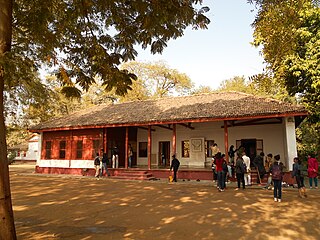
Sabarmati Ashram is located in the Sabarmati suburb of Ahmedabad, Gujarat, adjoining the Ashram Road, on the banks of the River Sabarmati, 4 miles (6.4 km) from the town hall. This was one of the many residences of Mahatma Gandhi who lived at Sabarmati (Gujarat) and Sevagram when he was not travelling across India or in prison. He lived in Sabarmati or Wardha for a total of twelve years with his wife Kasturba Gandhi and followers, including Vinoba Bhave. The Bhagavad Gita was recited here daily as part of the Ashram schedule.
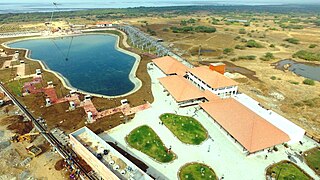
Dandi is a village in the Jalalpore taluka, Navsari District, Gujarat, India. It is located on the coast of the Arabian Sea near the city of Navsari.

Kanhaiyalal Maneklal Munshi, popularly known by his pen name Ghanshyam Vyas, was an Indian independence movement activist, politician, writer from Gujarat state. A lawyer by profession, he later turned to author and politician. He is a well-known name in Gujarati literature. He founded Bharatiya Vidya Bhavan, an educational trust, in 1938.

Ravishankar Vyas, better known as Ravishankar Maharaj, was an Indian independence activist, social worker and Gandhian from Gujarat.

Abbas Tyabji was an Indian freedom fighter from Gujarat, and an associate of Mahatma Gandhi. He also served as the Chief Justice of Baroda State. His grandson is historian Irfan Habib.
Navsari is the ninth biggest city in the state of Gujarat in India. It is the administrative headquarters of Navsari District. Navsari is situated between Surat & Mumbai. Navsari is a twin city of Surat. It is located 37 km south of Surat. As per 2011 Census of India, Navsari is 16th biggest city of Gujarat state. It ranked 10th most populous city of Gujarat in 1991 Census of India and 2001 Census of India. Navsari is the 25th cleanest city of India according to the Swachh Bharat Urban mission. Dandi village near Navsari was the focal point of the great Salt March led by Mahatma Gandhi during civil disobedience movement of India.
Pyarelal Nayyar (1899–1982) was the personal secretary of Mahatma Gandhi in his later years. His sister Sushila Nayyar was the personal physician to Mahatma Gandhi.
Taxation of salt has occurred in India since the earliest times. However, this tax was greatly increased when the British East India Company began to establish its rule over provinces in India. In 1835, special taxes were imposed on Indian salt to facilitate its import. This paid huge dividends for the traders of the British East India Company. When the Crown took over the administration of India from the Company in 1858, the taxes were not replaced.

South Gujarat, also known as Dakshin Gujarat, is a region in the Indian state of Gujarat. The region has a wetter climate than other regions of Gujarat. The western part is almost coastal and is known as Kantha Vistar, and the eastern part is also known as Dungar Vistar, which ranges from 100 to 1000 metres, with the highest peak at Saputara in the Dang district.
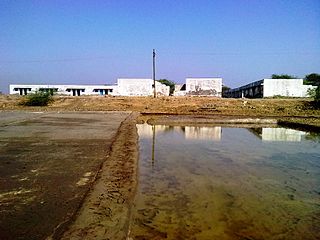
Dharasana is a town in Valsad, Gujarat, India, adjacent to Dandi. It shot to worldwide fame in May, 1930 as the site of the Dharasana Satyagraha, an immediate follow up to the Dandi salt march.

Mahatma Mandir is a convention and exhibition centre located at sector 13 C in Gandhinagar, Gujarat, India. It is inspired by the life and philosophy of Mahatma Gandhi. It is one of the biggest convention centres in India, spread over an area of 34 acres. It was developed by the Government of Gujarat. Business summits like Vibrant Gujarat Global Investor Summit 2011, 2013, 2015, 2017 and 2019 were organised here.

Gyarah Murti is a monument located in New Delhi, India, commemorating the country's struggle for independence under the leadership of Mahatma Gandhi. Devi Prasad Roy Choudhury is credited as its sculptor. An ensemble of eleven statues, ten represent people from diverse sociocultural, religious and economic backgrounds following Gandhi in the lead. Widely believed to depict the Dandi March, the statue has been replicated in other cities in India and was featured on the old 500-rupee currency note.

The Vedaranyam March was a framework of the nonviolent civil disobedience movement in British India. Modeled on the lines of Dandi March, which was led by Mahatma Gandhi on the western coast of India the month before, it was organised to protest the salt tax imposed by the British Raj in the colonial India.

The online Gandhi Heritage Portal preserves, protects, and disseminates original writings of Mohandas K. Gandhi and makes available to the world the large corpus of “Fundamental Works” which are useful for any comprehensive study of the life and thought of Gandhiji. Gandhiji was 24 years old in South Africa "Natal Indian Congress " made in 1894.
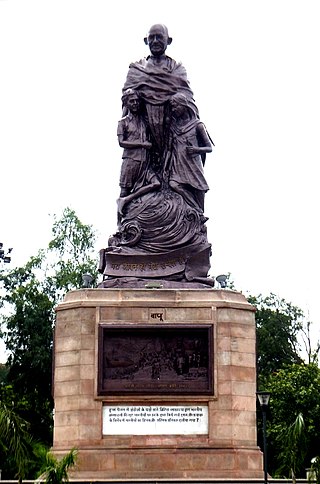
The statue of Mahatma Gandhi in Gandhi Maidan, Patna, is a public monument of India's father of Nation Mahatma Gandhi. The statue is the world's tallest bronze statue of Mahatma Gandhi. It was unveiled on 15 February 2013 by the then chief minister of Bihar, Nitish Kumar. It was established by Government of Bihar at a cost of ₹35 crore. The second tallest Gandhi statue turuvanur Chitradurga taluk and district karnataka

Dandi Beach is one of the prominent beaches located in Dandi village, Gujarat. Dandi beach is one of the cleanest beaches in the Arabian Sea. Dandi Beach is historically prominent as Mahatma Gandhi led the salt sathyagraha from Sabarmati Ashram (Ahmedabad) to Dandi. This is the beach where Mahatma Gandhi broke the salt tax law of the British after the Salt March.

Mithuben Hormusji Petit was one of the pioneer Indian independence female activists who participated in Mahatma Gandhi's Dandi March.
Gangadharrao Balkrishna Deshpande also known as Lion of Karnataka, Khadi Bhageeratha of Karnataka, was an Indian activist who was the leader of the Indian independence movement against British colonial rule from Belgaum. He was the right-hand man of both Lokamanya Tilak and Mahatma Gandhi in succession. Deshpande considered Lokamanya Tilak as his Guru. Deshpande served as Chairman of Karnataka branch of All-India Spinners' Association, and the All India Village Industries Association for some years. Deshpande was largely responsible for the installation of Premier of Bombay, B. G. Kher.

Sadashiv Sathe or Bhau Sathe was an Indian sculptor. His notable works include the 5-metre high statue of Mahatma Gandhi that is part of the main structure of the National Salt Satyagraha Memorial situated at Dandi, Navsari and the 18-foot equestrian statue of Shivaji at the Gateway of India, Mumbai.
